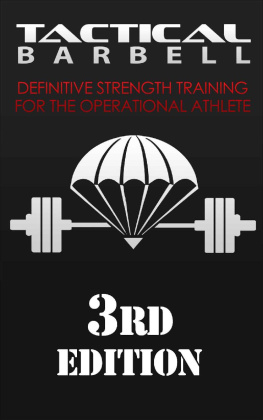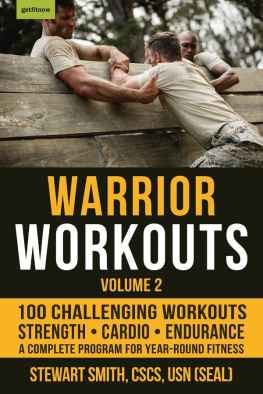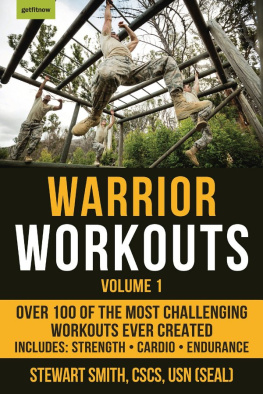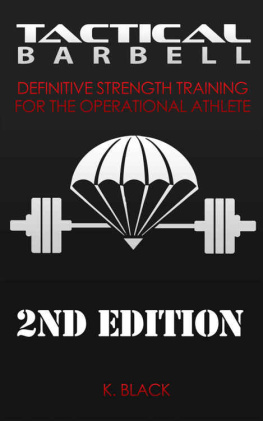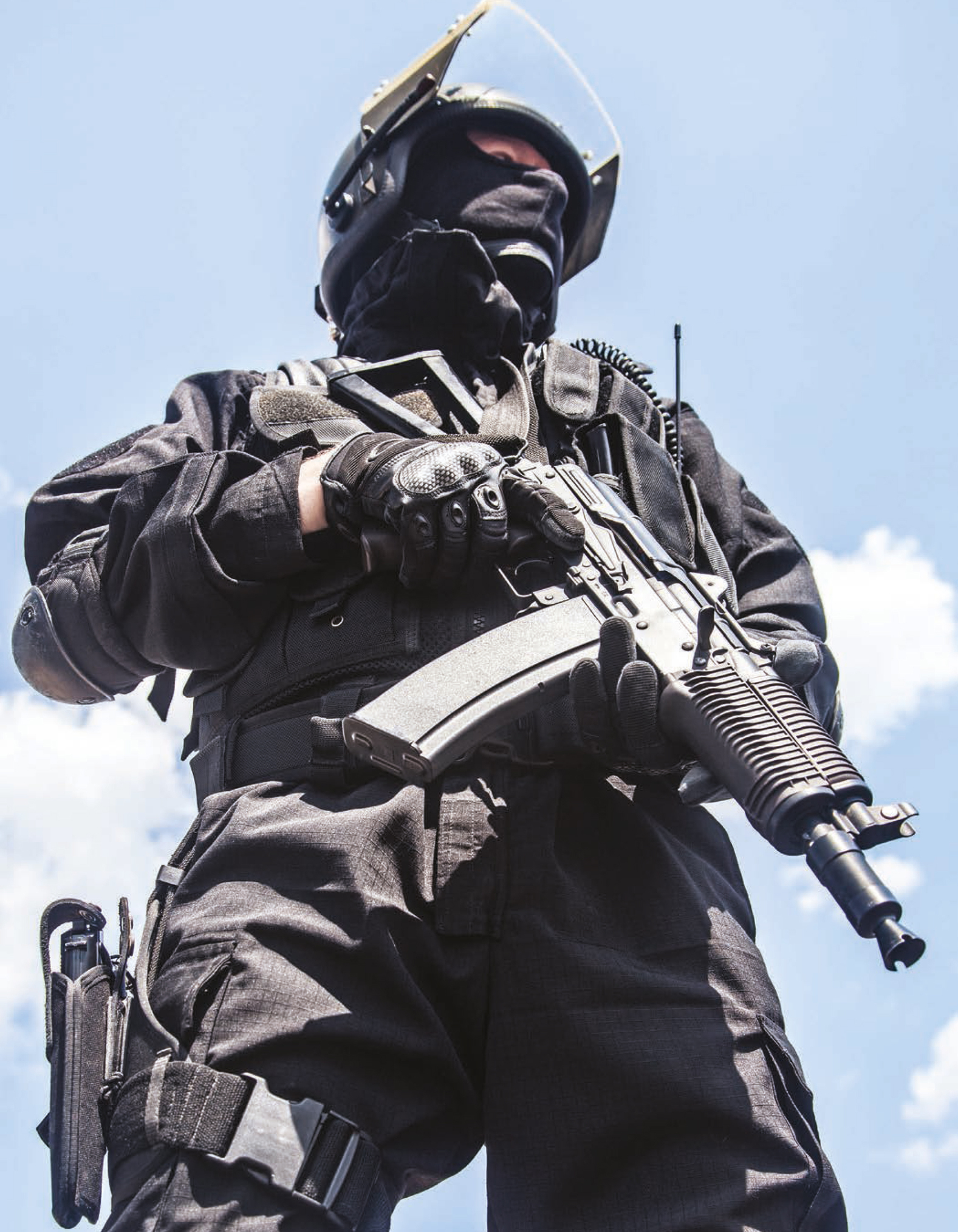Hatherleigh Press is committed to preserving and protecting the natural resources of the earth. Environmentally responsible and sustainable practices are embraced within the companys mission statement.
Visit us at www.hatherleighpress.com and register online for free offers, discounts, special events, and more.
GO TO:
WWW.GETFITNOW.COM
ITS FITNESS 24/7
VIDEOS - WORKOUTS - FORUMS - ONLINE STORE
Tactical Strength
Text copyright 2017 Stewart Smith
Library of Congress Cataloging-in-Publication Data is available upon request.
ISBN: 978-1-57826-662-3
Ebook ISBN9781578267262
All rights reserved. No part of this book may be reproduced, stored in a retrieval system, or transmitted, in any form or by any means, electronic or otherwise, without written permission from the publisher.
Cover and interior design by Heather Magnan
Exercise photography by John Eric Dove and Peter Field Peck
Disclaimer
What you are about to undertake is an advanced fitness program. Injuries may occur in any workout program, as with this specific program, written by Stew Smith. This recommended program has worked for many others. It may not be right for you. It is recommended that you consult a physician before undertaking any new fitness regimen. The workouts and information in this book do not represent any implicit or explicit endorsement by the United States Navy SEALs or United States military of any commercial or private products or services presented here.
v4.1
a
CONTENTS
WHAT IS
TACTICAL
STRENGTH?
What is Tactical Strength?
Tactical strength is just one element of tactical fitness, but is quite possibly the most important of them all. Some will argue that a foundation of strength is essential to most military, special ops, police, and fire fighting programs. Tactical strength is the element of fitness that allows the tactical athlete to grab, carry, push, pull, or lift heavy pieces of equipment or people when needed. There are several other elements of fitness required for the tactical athlete, such as endurance, muscle stamina, speed, agility, mobility, flexibility, and power. Unlike an athlete that specializes in a particular sport, the tactical athlete has to be good at all of the above elements of fitness. For the regular athlete, depending upon your sport and the level of competition, you have to be great in just 12 elements of fitness.
You do not need to be a world-class athlete to be a tactical professional, but if you think about it, the job of a tactical professional is potentially one of worldclass danger. The tactical professions require you to run in the direction that others are running away from. Whether it is into a burning building, explosions, gunfire, or natural disasters, your military, police, and firefighters are doing things that are never asked of sport athletes. Your fitness can one day mean the difference between life and death for the people around you, or for yourself. Special Ops, military, police, firefighters, first responder, and emergency service personnel are the tactical professionals that require all the elements of tactical fitnessand most importantly, they require strength.
Tactical Strength in Action
The common denominator of professionals who do their job at the highest level is strength. Tactical strength allows the athlete to potentially prevent injury while increasing power, speed, and agility. Strength is also the initial phase of building muscle stamina. For instance, to complete your first pull-up, you need to build strength; to reach your twentieth pull-up, that same strength exercise has to become a muscle stamina and endurance exercise. But you cannot do even that first pull-up without first building a foundation in strength. Taking your strength foundation and training to evolve it into greater muscle stamina and work capacity is the main difference between tactical strength and the typical 1-rep, maximal strength used in athletic training. Strength training combined with tactical skills and movements also helps to create power that is more specific to the demands of your job.
A tactical strength program should therefore be geared towards increasing work capacity, power, muscle stamina, and overall durability while protecting against injury. You can achieve an advanced level of strength and still be good at running, swimming, rucking, or whatever cardiovascular endurance event your job requires. However, you cannot ignore the other elements just to reach extraordinary 1-rep maxes within your unit.
Balancing Your Tactical Strength Program
World-class athletes specialize in only a few of the components of fitness for their athletic events. Look at a competitive Olympic swimmer or power lifter: both are incredible to watch, but both will fail miserably at each others events on an Olympic stage. The swimmer may be able to lift some weight, but nothing super heavy; and the powerlifter may not be able to swim 50 meters without getting lapped. The point of this comparison is that far too many tactical athletes attempt workouts and training programs designed for world-class athletes. There is no need to try an Olympic swim or the running plan used by your favorite gold medalist to help you pass a fitness test consisting of a 500 meter swim or a 1.5 mile timed run, even if you are trying to be a Special Ops Team member. Trying to deadlift 600+ pounds (which is a massive amount, but still nowhere near world-class) may cause injury or interfere with your ability to workout, much less enable you to run, ruck, or swim with fins for long distances. You need to ask yourselfwhat would you have to give up in order to compete in an Ironman Triathlon; take part in a body building competition; or place in a power-lifting meet? If you would have to sacrifice too many other elements of fitness for too long a period, you may want to reconsider your goals. There is nothing wrong with doing a lifting cycle and focusing on strength, power, speed, and agility. In fact, that is what










